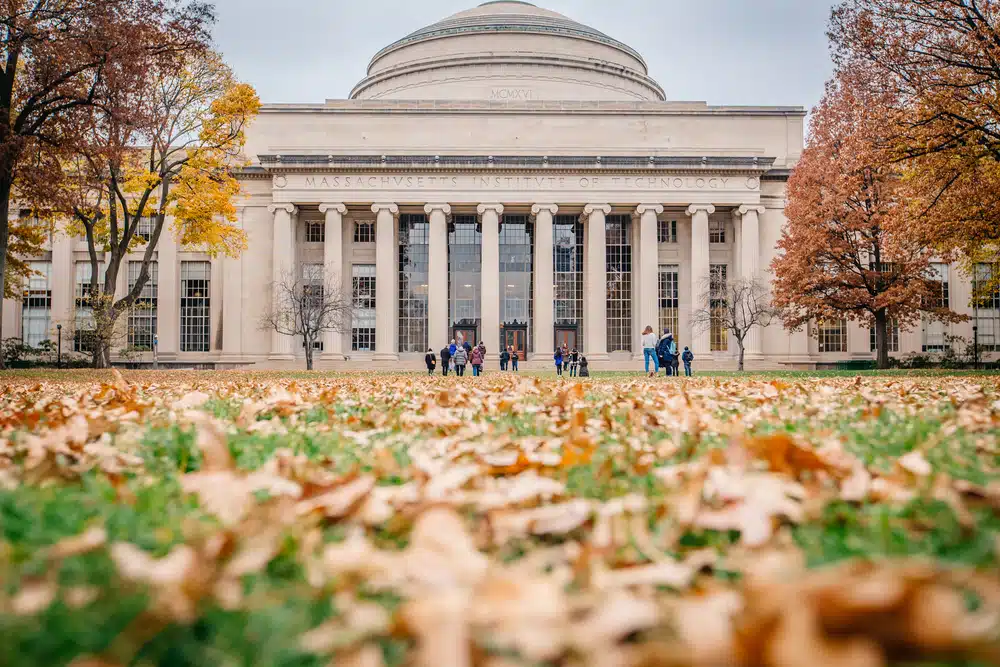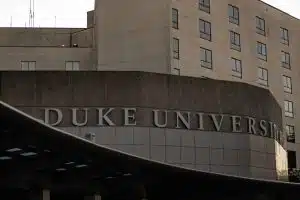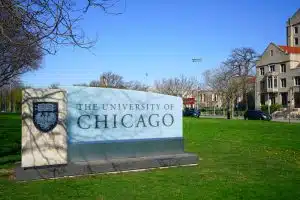MIT Freshman Class Size
The Massachusetts Institute of Technology, more commonly known as MIT, is one of the world’s premier institutions for technological education and research. It hosts a diverse community of scholars who are deeply committed to studying and understanding the world. Understanding the size and the factors that influence the size of the freshman class at MIT is a profoundly interesting exercise. Read on to discover!
Understanding the Admission Process at MIT
A key element to comprehending the MIT freshman class size is the university’s rigorous and highly selective admission process. The MIT Admissions Office evaluates thousands of applications each year, aiming to identify a diverse group of students who will thrive in MIT’s challenging academic environment.
When reviewing applications, MIT looks for individuals who not only demonstrate exceptional academic abilities but also show a strong dedication to community service. The university values students who have made a positive impact in their communities and have shown leadership potential. MIT believes that these qualities are essential for success in their academic programs and in the future careers of their students.
While academic performance is important, MIT understands that standardized test scores and grades alone do not fully reflect a student’s potential. Therefore, the admissions process at MIT takes a holistic approach, considering various factors beyond academic achievements.

Criteria for Admission
The university seeks individuals showcasing exceptional academic abilities, dedication to community service, leadership potential, and a desire for lifelong learning. MIT values these qualities over standardized test scores or academic performance alone. Supplementary factors such as letters of recommendation, personal essays, and interviews play crucial roles in the selection process as well.
MIT believes that a diverse student body enriches the educational experience for all students. Therefore, the admissions office actively seeks applicants from different backgrounds, cultures, and experiences. This commitment to diversity ensures that students at MIT are exposed to a wide range of perspectives, fostering a vibrant and inclusive learning environment.
The Role of Early Action
Early Action is a non-binding early application process offered by MIT. Applying via Early Action allows students to hear back from the university earlier and can influence the overall freshman class size as those admitted early are more likely to enroll than those admitted under regular decision.
By offering Early Action, MIT aims to provide students with more flexibility and control over their college application process. It allows students to receive an early decision from MIT while still considering other college options. This can be particularly beneficial for students who have a strong desire to attend MIT and want to secure their spot in the freshman class as early as possible.
Furthermore, the Early Action process allows MIT to gauge the level of interest from prospective students. Students who apply early and are admitted are more likely to enroll, which helps the university in planning and managing the size of the incoming class. This information is crucial for MIT to ensure that they can provide the best possible resources and support to their students.
It is important to note that while applying through Early Action can increase the chances of admission, it is not a guarantee. MIT still maintains its rigorous evaluation process and carefully considers each applicant’s qualifications and fit with the university’s mission and values.
Historical Trends in MIT Freshman Class Sizes
Closely examining the historical trends in MIT’s freshman class sizes provides valuable insights. Over the years, class size has resonated with changing education environments, societal norms, and economic conditions. For the most up-to-date context, it’s worth noting that the Class of 2027 has 1,092 members. This number reflects the latest trends and policies affecting MIT’s freshman class size, offering a snapshot of the university’s current student body composition.
MIT, a renowned institution for science and technology, has witnessed fascinating shifts in its freshman class sizes throughout its rich history. These changes have been influenced by a multitude of factors, shaping the composition and dynamics of each incoming class.
Decade by Decade Analysis
In the mid-20th century, MIT expanded its student numbers in response to increased interest in science and technology post-World War II. As the world sought to rebuild and advance, the demand for skilled engineers and scientists grew exponentially. MIT, being at the forefront of technological innovation, welcomed a surge of aspiring minds, resulting in larger freshman class sizes.

The 1960s and 1970s marked a period of social change and unrest, with the civil rights movement and the Vietnam War dominating the national conversation. These events had a profound impact on higher education, including MIT. The institution saw fluctuations in class sizes as societal norms shifted and students sought to engage with the pressing issues of the time.
The 1980s and 1990s witnessed the rise of the digital age, with information technology becoming increasingly prevalent in global society. As the world became more interconnected, the demand for computer science and related fields skyrocketed. MIT responded to this growing trend by expanding its freshman class sizes, accommodating the influx of students eager to explore the realm of digital sciences.
The 2000s saw another surge in MIT’s freshman class sizes, driven by the rapid advancements in technology and the increasing importance of STEM (Science, Technology, Engineering, and Mathematics) disciplines. As the world became more reliant on technology, MIT’s reputation as a leading institution in these fields attracted a wave of talented individuals seeking to make their mark in the digital landscape.
More recently, MIT’s comprehensive humanities and social science offerings have gained recognition, attracting a more diverse group of students. The institution’s commitment to interdisciplinary education has resulted in larger class sizes, as students from various backgrounds and interests are drawn to the unique opportunities provided by MIT.
Factors Influencing Class Size Over Time
Multiple factors have influenced the size of MIT’s freshman class over time. The growing global interest in STEM disciplines has played a significant role, as the world recognizes the importance of science and technology in shaping the future. MIT’s reputation as a leading institution in these fields has made it a top choice for aspiring scientists and engineers, contributing to the growth in class sizes.
Demographic shifts have also impacted class sizes at MIT. As the population changes, so does the pool of potential applicants. MIT has made efforts to attract students from diverse backgrounds, resulting in a more varied and larger freshman class each year.
Economic fluctuations have had their share of influence as well. During periods of economic prosperity, more students may have the means to pursue higher education, leading to increased applications and larger class sizes. Conversely, during economic downturns, the number of applicants may decrease, resulting in smaller class sizes.
MIT’s strategic planning regarding its institutional direction has also played a role in class size fluctuations. As the institution evaluates its priorities and areas of focus, it may adjust the number of students admitted to align with its goals and resources. This strategic decision-making process can impact the size of the freshman class in any given year.
As MIT continues to evolve and adapt to the ever-changing landscape of education and society, the trends in freshman class sizes will undoubtedly continue to reflect the dynamic nature of the institution and its commitment to excellence.
The Impact of Class Size on Student Experience
The size of MIT’s freshman class bears direct and indirect implications on the student experience.
When it comes to class size, MIT recognizes the importance of finding the right balance. Smaller class sizes at MIT facilitate intensive faculty-student interaction, allowing for personalized attention and mentorship. In these smaller settings, students have the opportunity to engage in meaningful discussions, ask questions, and receive immediate feedback from professors. This level of interaction fosters a deeper understanding of the material and encourages critical thinking.

Furthermore, smaller class sizes enable hands-on learning experiences. MIT is known for its emphasis on experiential learning, and smaller classes provide the ideal environment for students to engage in practical applications of their knowledge. Whether it’s conducting experiments in a state-of-the-art laboratory or participating in group projects, students in smaller classes have more opportunities to actively engage with the material and develop practical skills.
In addition to intensive faculty-student interaction and hands-on learning experiences, smaller class sizes also allow for in-depth explorations of complex concepts. Students have the time and space to delve deeper into subjects, analyze different perspectives, and engage in intellectual debates. This not only enhances their understanding of the material but also fosters a passion for learning and intellectual curiosity.
Class Size and Academic Performance
Smaller class sizes at MIT facilitate intensive faculty-student interaction, hands-on learning experiences, and in-depth explorations of complex concepts. This can result in better academic outcomes for students compared to larger class settings.
Research has shown that students in smaller classes tend to perform better academically. With more individualized attention from professors, students can address their specific learning needs and receive personalized guidance. This level of support can lead to increased motivation, improved study habits, and higher grades.
Furthermore, smaller class sizes foster a collaborative learning environment. Students have more opportunities to work closely with their peers, exchange ideas, and engage in group discussions. This collaborative approach to learning not only enhances understanding but also cultivates teamwork and communication skills, which are essential for success in the professional world.
On the other hand, larger class sizes can present challenges for students. In these settings, it may be more difficult for students to actively participate in class discussions, ask questions, or receive individualized feedback. The sheer number of students can sometimes create a sense of anonymity, making it harder for students to feel connected to their professors and peers.
Class Size and Campus Life
Larger freshman class sizes increase the diversity of student interests, talents, and perspectives, enhancing the vibrancy of MIT’s campus life. But it might also lead to higher competition for resources and opportunities.
With a larger freshman class, MIT’s campus becomes a melting pot of diverse backgrounds, cultures, and experiences. This diversity enriches the social fabric of the university, creating a vibrant and inclusive community. Students have the opportunity to learn from one another, broaden their perspectives, and develop a deeper understanding and appreciation for different cultures and viewpoints.
Moreover, a larger freshman class can lead to a wider range of extracurricular activities and student organizations. With more students, there is a greater likelihood of finding like-minded individuals who share similar interests and passions. This creates a dynamic campus life where students can engage in various clubs, sports teams, and cultural organizations, further enhancing their overall college experience.

However, it’s important to note that larger class sizes can also present challenges. With more students vying for limited resources and opportunities, there may be increased competition for internships, research positions, and leadership roles. Students may need to be more proactive in seeking out these opportunities and may face a more competitive environment.
In conclusion, class size plays a significant role in shaping the student experience at MIT. Smaller class sizes promote intensive faculty-student interaction, hands-on learning experiences, and in-depth explorations of complex concepts, leading to better academic outcomes. On the other hand, larger class sizes contribute to a diverse and vibrant campus life, but may also present challenges in terms of resource allocation and competition. MIT strives to strike the right balance, ensuring that students have access to the benefits of both small and large class settings.
Future Predictions for MIT Freshman Class Size
Projecting future trends for MIT’s freshman class size is challenging due to the constellation of factors at play. However, some developments in technology and demographics may offer signposts.
The Role of Online Learning
The rise of online learning could potentially impact MIT’s traditional, on-campus class sizes. More prospective students may opt for online courses, affecting the composition and size of the freshman class.
Demographic Shifts and Their Impact
Over the next few decades, shifts in the demographic groups graduating from high schools, especially in the U.S., may impact MIT freshman class size. The university’s efforts to attract international students and embrace a more diverse student body could also play a significant role.
In conclusion, understanding MIT’s freshman class size offers a window into its distinct approach to education and a reflection of broader societal trends. The ongoing interplay of factors shaping these trends assures MIT’s future will be as dynamic and fascinating as its past.




































